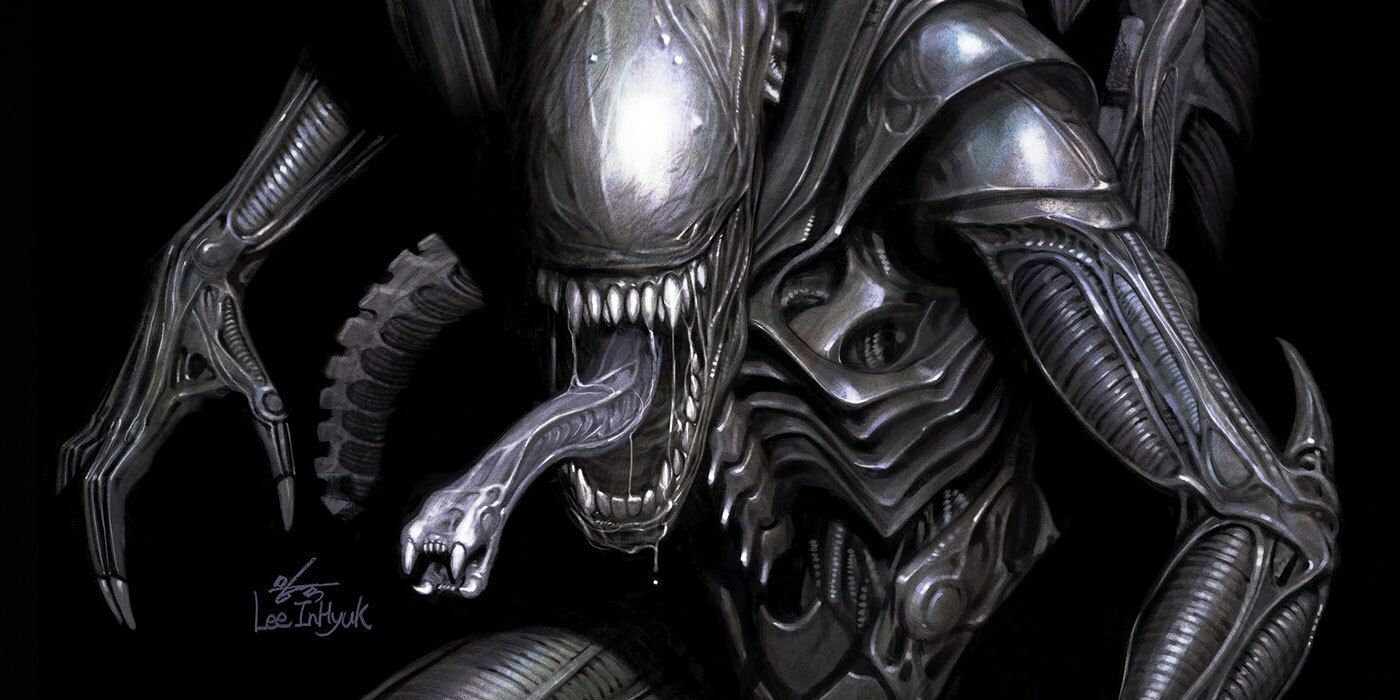Marvel has launched a bold, new future for the Alien franchise. Here’s where the comic book series lines up with the movies.
WARNING: The following contains spoilers for Alien #1, by Phillip Kennedy Johnson, Salvador Larroca, Guru-eFX and VC’s Clayton Cowles, on sale now.
Marvel Comics has started a bold, new future for the Alien franchise after acquiring the publishing license to the iconic science fiction/horror property. With a new comic book series helmed by Phillip Kennedy Johnson and Salvador Larroca, the series includes nods to the first two classic films as it introduces its own cast of characters confronting the ravenous xenomorphs across the cosmos. And as the new series begins, it quickly resolves where exactly in the franchise’s timeline this story falls in relation to Ridley Scott and James Cameron’s Alien movies.
The series opens with Weyland-Yutani employee Gabriel Cruz retiring from the mega-corporation while being debriefed on a harrowing encounter with the xenomorphs that has left him deeply traumatized. As Cruz meets with a Bishop model android to help with his transition to civilian life, the year is revealed to be 2200, with Weyland-Yutani still comfortably positioned as the most powerful company in the cosmos as it continues to extend its reach beyond Earth and its solar system. And this date places it decades after the events of the original film trilogy and Ellen Ripley’s memorable conflict with the xenomorphs and their voracious queen.
The original 1979 film had taken place in 2122, with the Nostromo diverted to explore the moon LV-426, orbiting the faraway planet Calpamos under the pretense of investigating a distress signal. Instead, Weyland-Yutani wanted to expose the crew to the xenomorphs for further examination and, by 2179 as depicted in the 1986 film Aliens, had established a colony on the moon for an even closer look at the xenomorphs before the colony was completely overrun by the bloodthirsty monsters. This places the start of the new comic series 21 years later, with a Weyland-Yutani space station Epsilon housing a whole contingent of xenomorphs being observed by scientists, likely to develop them into biological weapons by the corporation as they had planned in Aliens before being stopped by Ripley and the space marines accompanying her. Alien 3 took place shortly thereafter, with Ripley and Bishop as the sole survivors of a crash on Fury 161.
It is currently unclear if the events of the comic book ignore the two prequel films Prometheus or Alien: Covenant as neither have been referenced in the series so far. Prometheus was set in 2093 as a different group of scientists were tasked by Weyland-Yutani to explore LV-223, similarly put in harm’s way by company founder Peter Weyland. Eleven years later in 2104, a colonization ship named Covenant was diverted by the sinister android David 8 to continue his experiments on the xenomorphs. With Alien: Resurrection taking place in 2379, the events of this particular film have not yet come to pass, thus it is unknown if the film is considered canonical to the new Marvel comic series at all or has been quietly discarded.
Set in the largely unexplored period between Alien 3 and Alien: Resurrection, Marvel’s new series has plenty of room to stretch out and unveil Weyland-Yutani’s latest, misguided attempt to control the xenomorphs for themselves. The canonicity of certain films are still in question, with only the 1979 original and 1986’s Aliens directly referenced but there is nothing so far in the new comic that openly contradicts other films in the series from having taken place. And with Weyland-Yutani still up to their old tricks, Cruz won’t have Ellen Ripley to back him as he faces off against a fresh wave of xenomorphs.
About The Author

